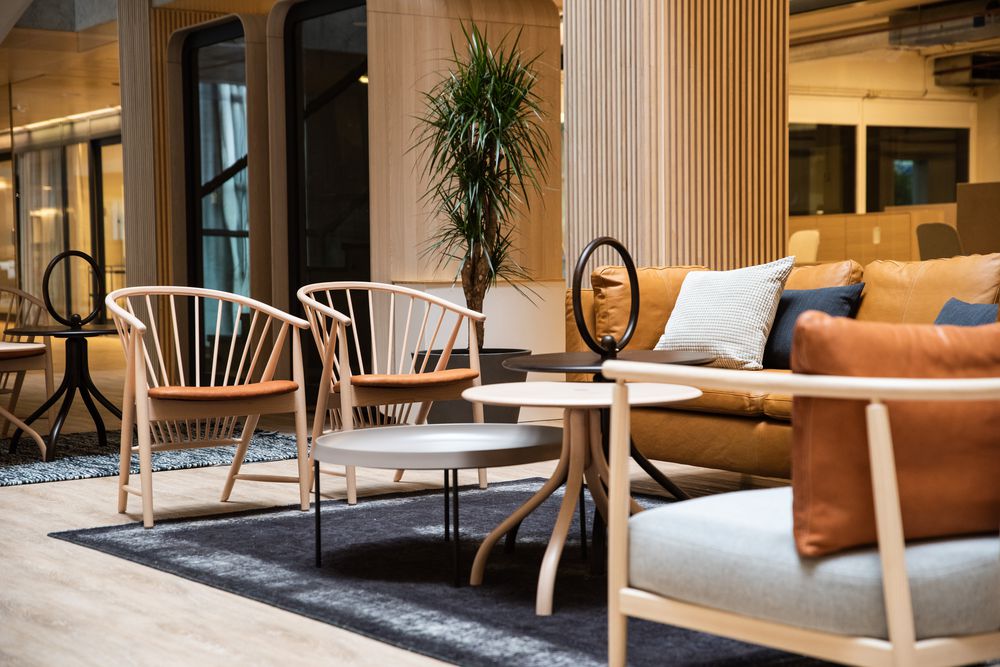Flexibility is key in the modern office
Today's buzzword for office managers and commercial landlords alike is “flexibility”. In a year of change, everyone has learned that you have to be ready for anything. That means making changes to your office as your needs evolve. Your company may need less space, or an entirely new kind of space. The key is having the flexibility to make changes on a dime, and that includes being able to change your office furniture to quickly suit your needs.
What does a flexible office mean? It is a combination of the physical space, attitude, and design. Here are some of the new ways of working that will impact the traditional office space.

Hybrid working
The term hybrid working became a reality in 2020, and those lessons carry over into the future. There is no cookie cutter way to do hybrid in today's workplace. Every company must assess what has gone well in hybrid working, and toss out what didn't work. That is one of the reasons why a flexible office arrangement is so important.
Hybrid working also means looking at how jobs are structured within the company. Leaders may choose to reassign roles, reorganise or combine departments, or automate tasks. All of these factors means rearranging the office on the fly leads to more productivity.
Hot desks
Hot desks are individual desks placed around the office that are used on an as-needed basis. Hot desks can support remote workers, temporary workers, in-house staff, visitors, and anyone without a permanent workspace. The benefits of hot desks are that people can work when and where they want, Hot desking usually involves a shared space, often with several workstations at one table.
Open offices
An open office is much more than just an open floor plan. A well-designed open office offers more collaboration combined with the structure to accomplish everyday work. Open offices still accommodate individual workstations within the larger concept, making the space flexible for any project. Companies can create distinct work areas within the open office, and even add phone booths for private conversations. The point of an open office is that anything is possible.

Coworking spaces
The coworking concept is a flexible office space that also makes a profit. Coworking spaces are perfect for gig workers, remote workers who need a change of scene, traveling pros, and sole proprietors who don't need a full office of their own. The benefits of renting space in a coworking situation is lower overhead, only paying for office space when you need it, and more luxurious amenities.
Shorter leases
The rising cost of commercial real estate is also emphasizing the need for a flexible work space, and landlords are responding with shorter leases. Corporate tenants are demanding the ability to scale quickly and are looking for less costly leases. This means that instead of the traditional 10 to 15-year lease, office space leases from one to five years are becoming increasingly more common. These shorter leases cut down on costs, and opens up opportunities for flex and coworking spaces.
Building block design
Managers are saving time and energy by utilising building block design in offices. Instead of picking individual pieces of furniture, building blocks make up a solid foundation for a workspace. Pre-curated collections can meet every office needs. Meeting spaces, collaboration areas, focus workstations, lounge areas, and storage centers all can be based on a few key pieces.

Agility in the workspace
Flexibility in the workspace means it is ready for change at a moment's notice, whether that is a new employee, fresh project, or taking the company in an entirely new direction. Furniture in the agile office space must support how employees really work. This goes beyond desks and chairs into ergonomics, comfort, and form.
Workspace agility means companies can adapt quickly to ever-changing technology and trends. It also means adopting a positive, productive attitude to go along with a seamless, cohesive space. There are many benefits to an agile workplace, including improved satisfaction and well-being among workers, reduced turnover, a free exchange of ideas, collaboration, and using the tools available to the best possible advantage.
An agile workplace also reduces the differences between management and employees. Today's employees want to feel empowered to reach their full potential. Agility means a culture that celebrates the whole organisation instead of just those on top. The office works as a whole, which creates a more trusting, collaborative environment. When everyone has clearly defined roles, it cuts down on office toxicity and turnover.

Modern office furniture by subscription
How can office furniture be flexible? The office furniture subscription model is a new concept with tangible benefits. It's a workplace solution that lets you completely change out your office furniture and decor as your needs change. Your costs stay the same, so there's no cash outlay for new furniture. That makes life easier on your balance sheet and the accounting department.
Subscription models let you select each piece of furniture based on quality, sustainability, and design. Sleek, modern designs make your company stand out and can improve company morale. By using a circular model, you can create a beautiful, productive working environment that is great for your staff and for the planet.
Given the uncertainty of the future, a flexible office is key for companies to move forward. True flexibility is a combination of innovative new work solutions like shorter leases and co-working spaces, and a productive and efficient attitude. The right furniture is the first step in defining your company. Find out more about circularity and learn more about how the office of the future is flexible.
